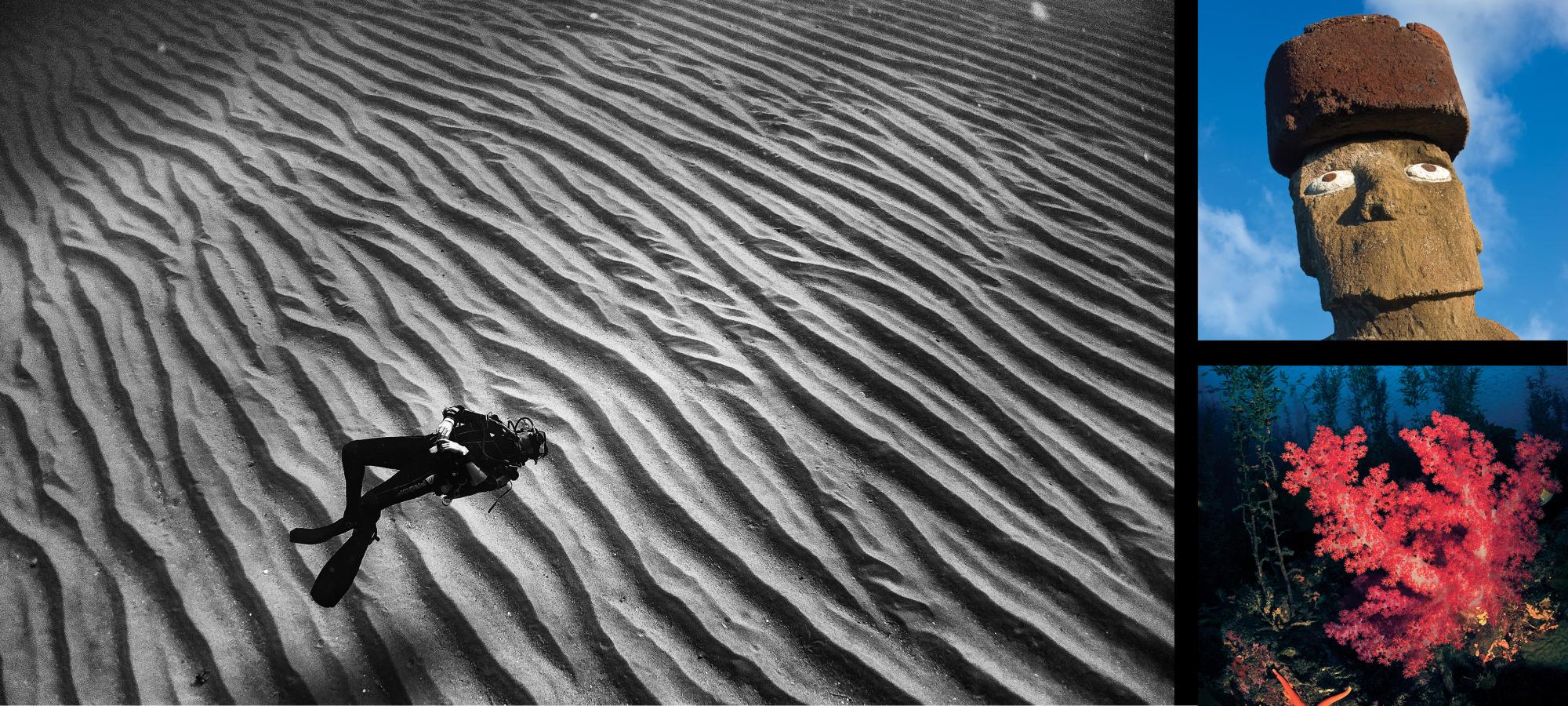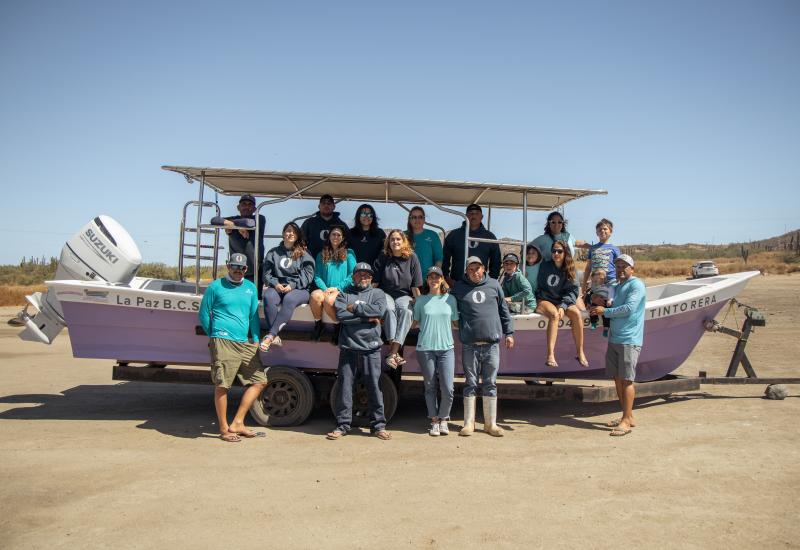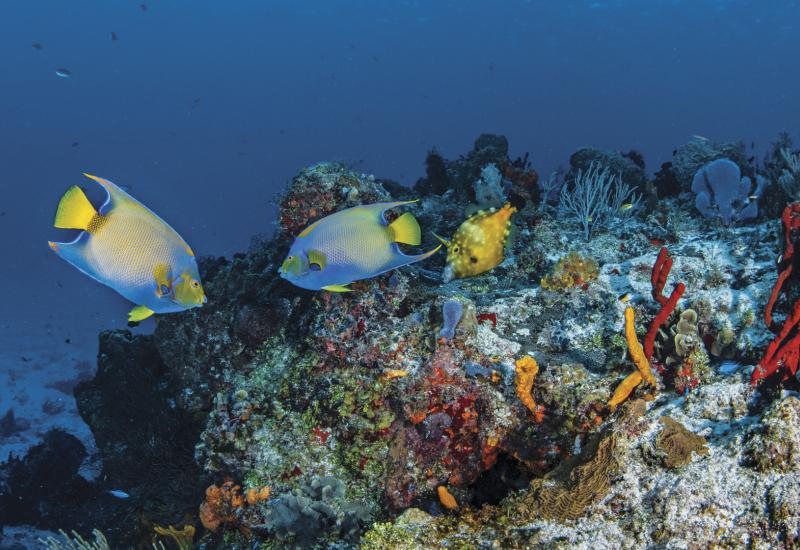13 UNESCO World Heritage Sites You Can Dive
The UNESCO world heritage list comprises more than 1,000 spots — 20 percent of them natural — designated as the legacy of all mankind. These 13 spots represent an even more precious slice: they can be fully appreciated only by divers.
From the Taj Mahal to the Grand Canyon, the most spectacular cultural and natural places in the world find a spot on the storied UNESCO World Heritage List — an international cooperation created during a 1972 United Nations conference to protect the world’s most wondrous locales. And while divers know there are seemingly limitless places to explore with a tank strapped to their backs, only a select few of the world’s dive destinations meet the World Heritage criterion. When you dive one of these sites, you’re submerging someplace deemed to have “outstanding universal value” that’s worth protecting at all costs. In our world, that’s a dive for the books.
1) BELIZE BARRIER REEF RESERVE SYSTEM
Belize
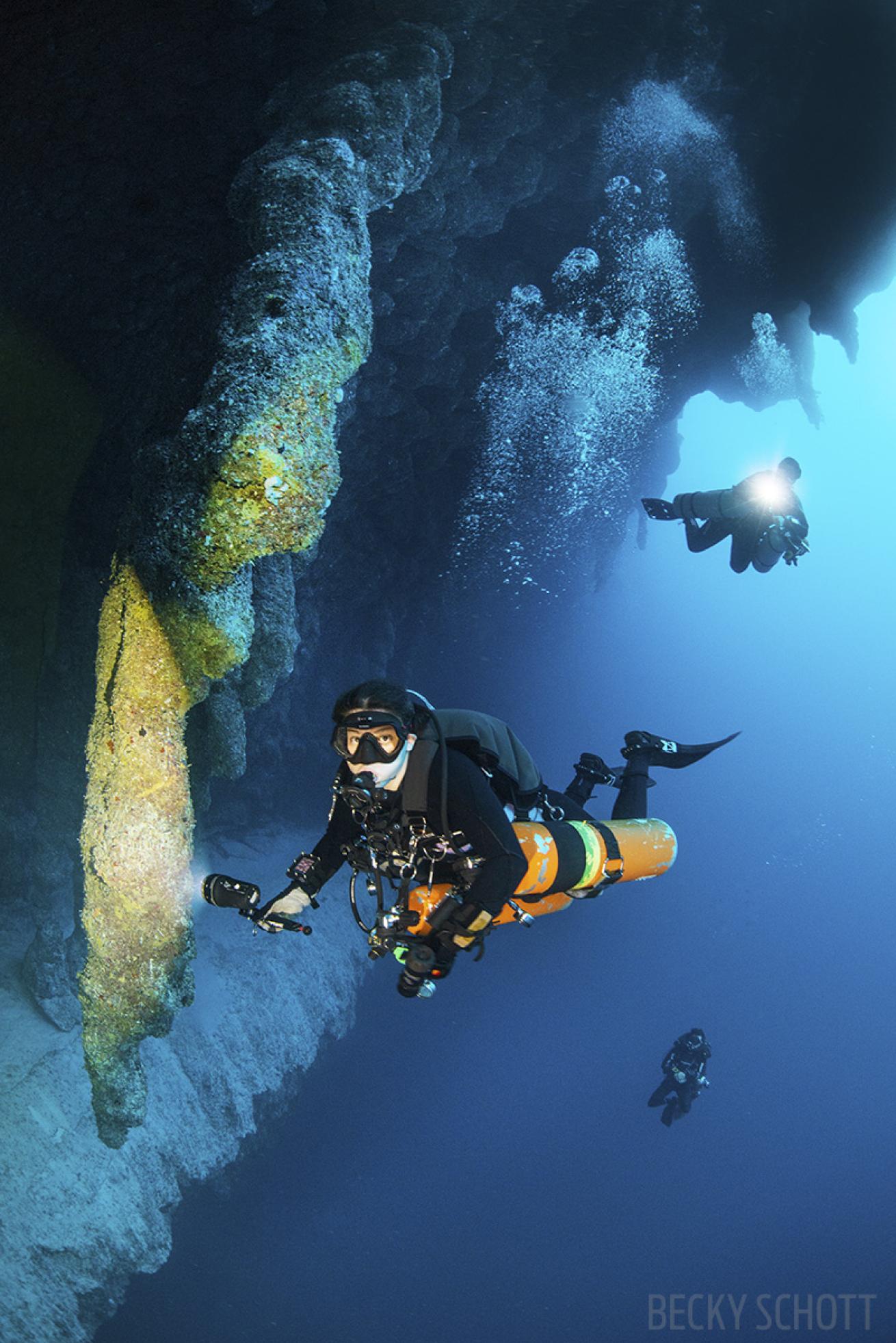
Becky ScottBelize's Great Blue Hole is at the heart of Lighthouse Reef.
Diving the UNESCO- listed reefs of Belize is like riding a conveyor belt through the evolution of reef development, rolling through such varied environments as mangrove forests, lagoons, sandy cayes and pristine atolls. Among the seven marine protected areas within the Meso-American Barrier Reef are the famed dive destinations of Glover’s Reef Marine Reserve, Half Moon Caye Natural Monument and Blue Hole Natural Monument. All up, the protected area encompasses roughly 450 mangrove and sandspun cayes. The barrier reef is the largest in the Western Hemisphere and home to such diverse and protected species as the West Indian manatee, loggerhead turtles and American crocodiles. Highlights for divers include the chance to fin alongside great hammerheads at Blue Hole, and whale sharks off Gladden Spit and Glover’s Reef Atoll. Among the endemic species you might bump into topside or below are Yucatan birds, lizards, tunicates and sponges, in addition to several species of fish, including the Glover’s toadfish, found on Glover’s Reef and Carrie Bow Cay.
2) ALDABRA ATOLL
Seychelles
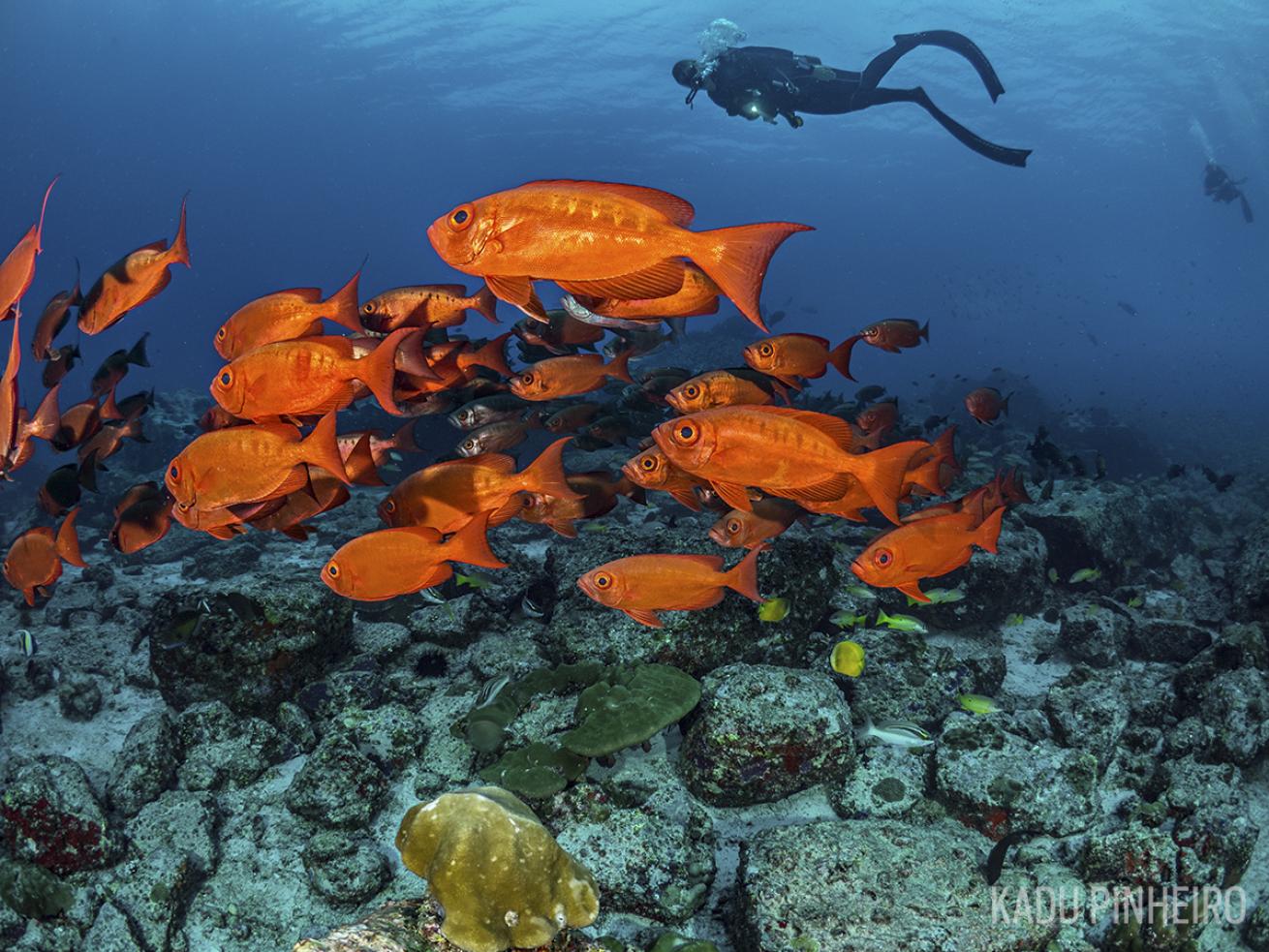
Kadu PinheiroAldabra Atoll's red snapper.
Like a massive doughnut flung into the Indian Ocean, Aldabra Atoll is one of the largest atolls in the world and stretches across 60 square miles of ocean to the northeast of Madagascar. Largely sheltered from outside influences, its remote location has protected a singular creature on the raised coral atoll, home to the largest population of giant tortoises in the world (yes, more than in the Galapagos). The four main islands that make up the atoll surround a shallow lagoon and are cut through with passes. Dives here are carefully calculated according to the variability of the tides and the rush of water in and out of the lagoon. A drift dive from the outside of the pass through the channels that lead to the inner lagoon is as exciting as recreational diving gets. Shoals of fish and sharks patrol the lagoon’s entrance, and once inside, you can admire reef fish and might even spot the elusive dugong.
3) GREAT BARRIER REEF
Australia
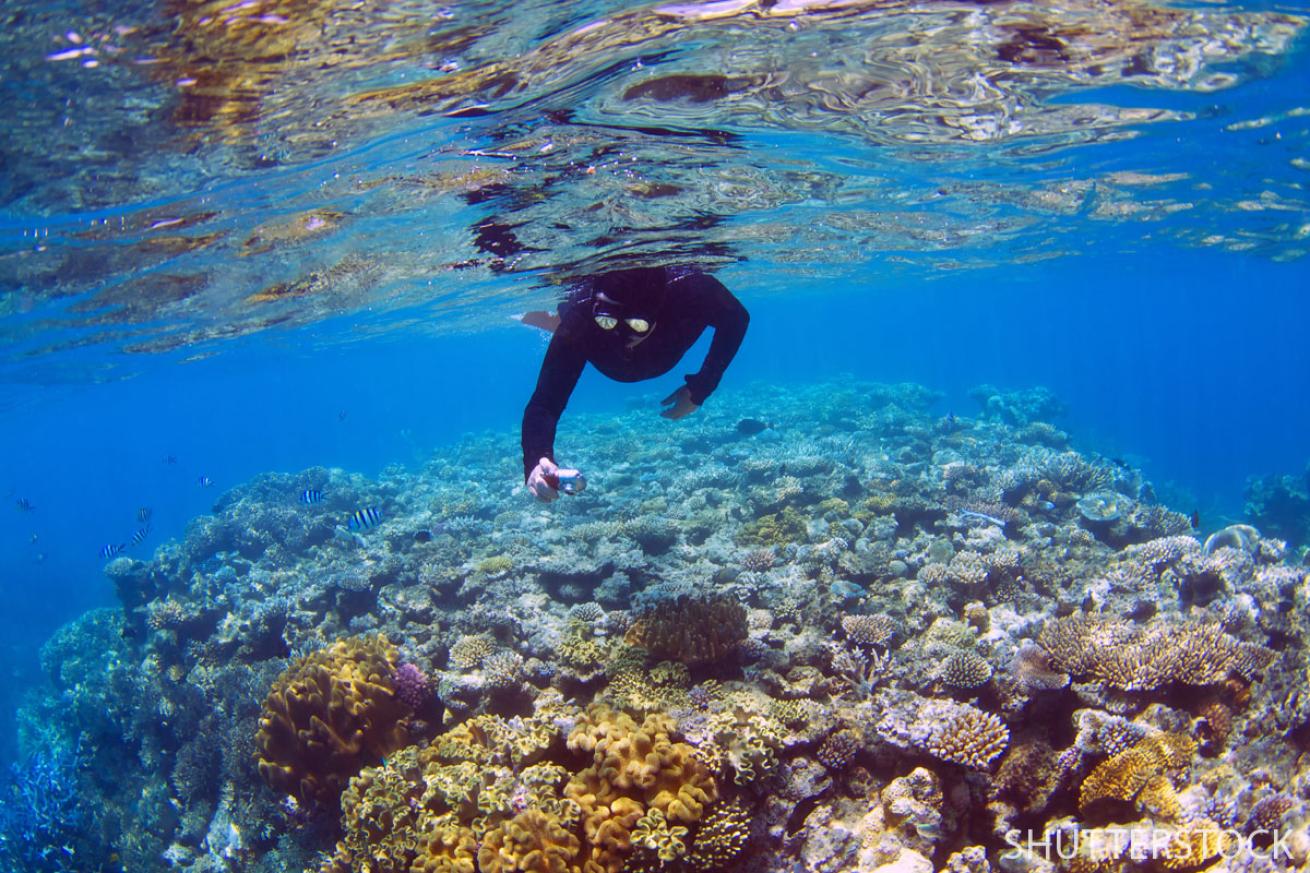
ShutterstockGreat Barrier Reef.
Australia’s national marine treasure consistently springs to mind when considering the world’s underwater riches. The figures are astounding. Living on the more than 2,500 individual reefs that comprise the Great Barrier Reef are more than 1,500 species of fish, 400 types of coral (including one-third of the world’s soft coral) and 4,000 different varieties of mollusks. Dugongs and marine turtles are among the threatened species at home in this part of the Coral Sea. But the Great Barrier Reef itself is increasingly threatened due to man-made and natural causes that include climate change, illegal fishing, and land-based runoff. Coral bleaching has killed off huge swaths of coral in the GBR’s remote north, but you can still set out by liveaboard to the famed Ribbon Reefs to dive some of the most pristine regions. “The Great Barrier Reef is scientifically accepted as a climactic barometer for global reef systems,” says Craig Evans, operations manager for Mike Ball Dive Expeditions, “and the fragile yet resilient reef system unequivocally offers some of the best diving found anywhere in the world.”
4) BIKINI ATOLL NUCLEAR TEST SITE
Marshall Islands
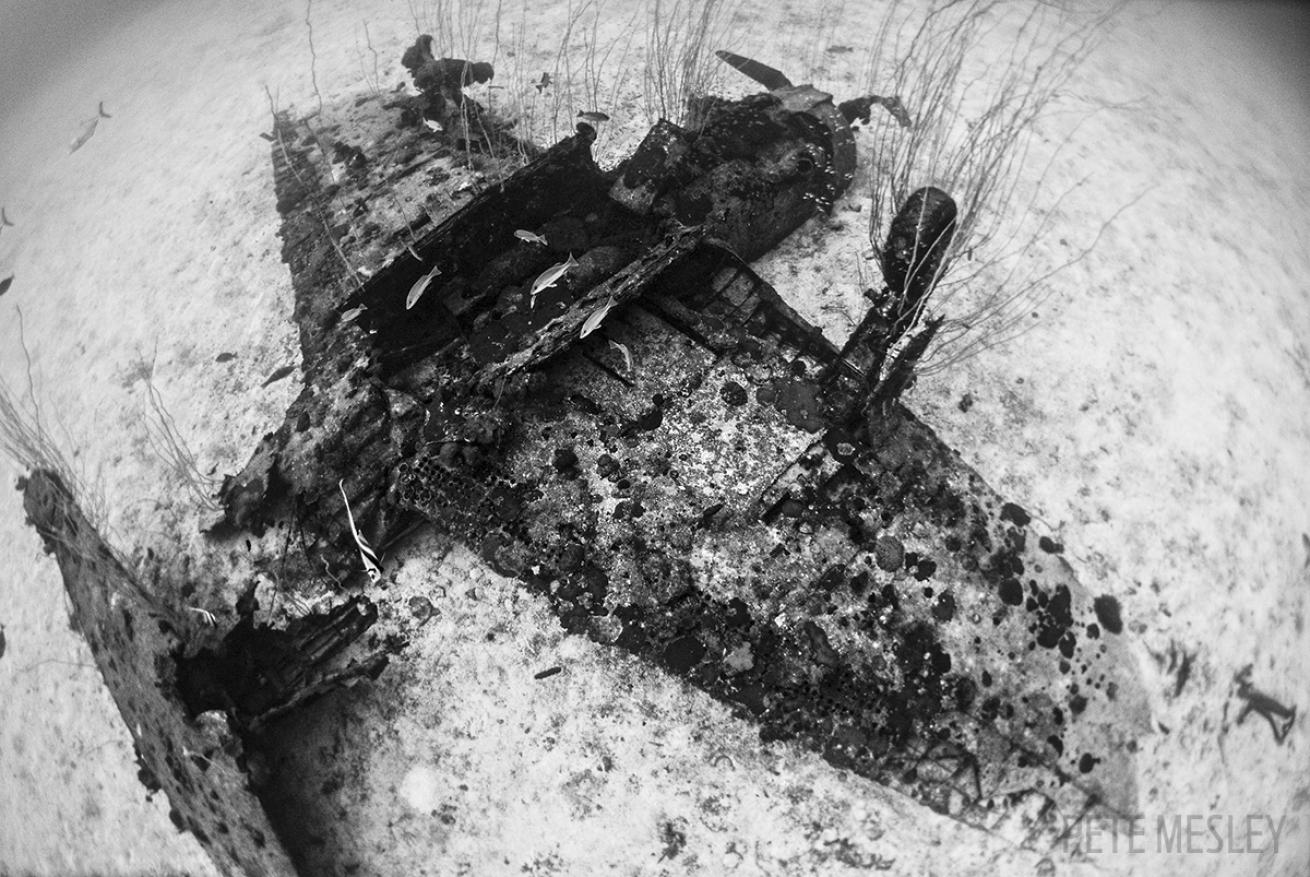
Pete MesleyA Curtiss SB2C Helldiver that was ripped from its chains on the Saratoga during Bikini Atoll nuclear testing.
The first site in the Marshall Islands to be given UNESCO World Heritage Status, Bikini Atoll is infamous for its Cold War history as the location of 67 nuclear tests carried out by the U.S. from 1946 to 1958. And while the criterion of its UNESCO listing has to do with the atoll’s history as a nuclear test site, it’s the storied wreck diving here that interests modern-day tec explorers. The mock naval fleet laid to rest in the lagoon during the nuclear testing includes aircraft carriers, battleships and cruisers that make for some of the most intrepid wreck diving in the world. Bikini Atoll could hardly be more remote, located just above the equator in the Pacific, and roughly equidistant from Australia and Hawaii. The tropical marine environment has more than rebounded since the days of the testing, and what awaits for those fully trained is an underwater Eden visited by only about 80 divers per year.
5) KOMODO NATIONAL PARK
Indonesia
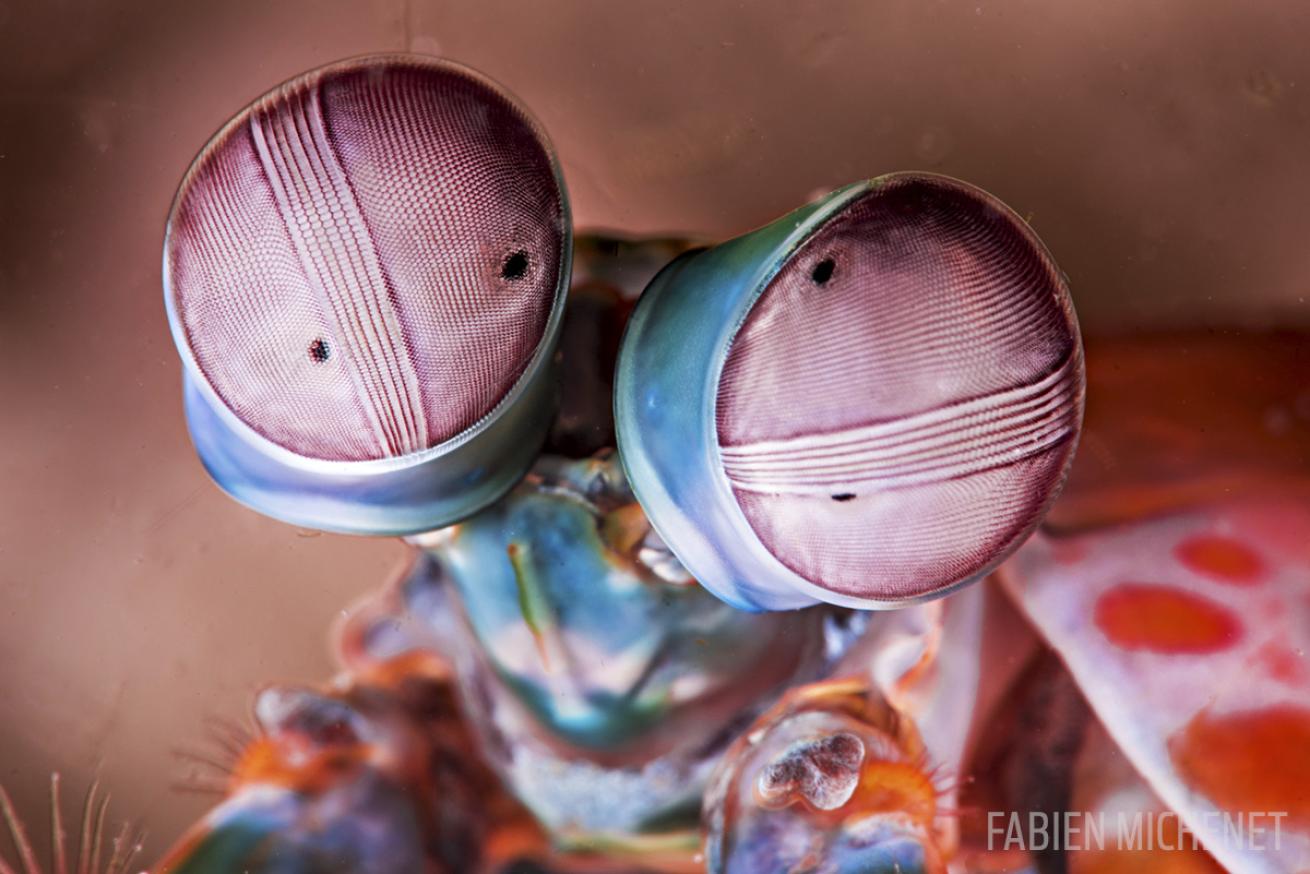
Fabien MichenetKomodo mantis shrimp have the most complex eyes in the world.
Komodo has the most diverse diving in all of Indonesia. And considering Indonesia’s location — nearly smack central in a triangle of biodiversity — that’s saying a lot. Komodo is “a one-stop destination that will whet your appetite for Indonesian diving,” says Debbie Benton Arriaga of the boutique liveaboard Arenui. Picture reefs blooming with soft corals, hard corals awash with anthias, turtles feeding in the shallows, and seamounts swarmed by large schools being stalked by jacks and sharks. Legendary dive sites include the ripping drifts of Karang Makassar and the cleaning stations of Manta Alley. There are surprisingly prolific muck sites too, where you can train your lens on such oddities as rhinopias, ghost pipefish and starry night octopuses. The site called Cannibal Rock offers a surface interval like no other on Earth, with the chance to observe the famous Komodo dragons stalking topside.
6) COCOS ISLAND NATIONAL PARK
Costa Rica
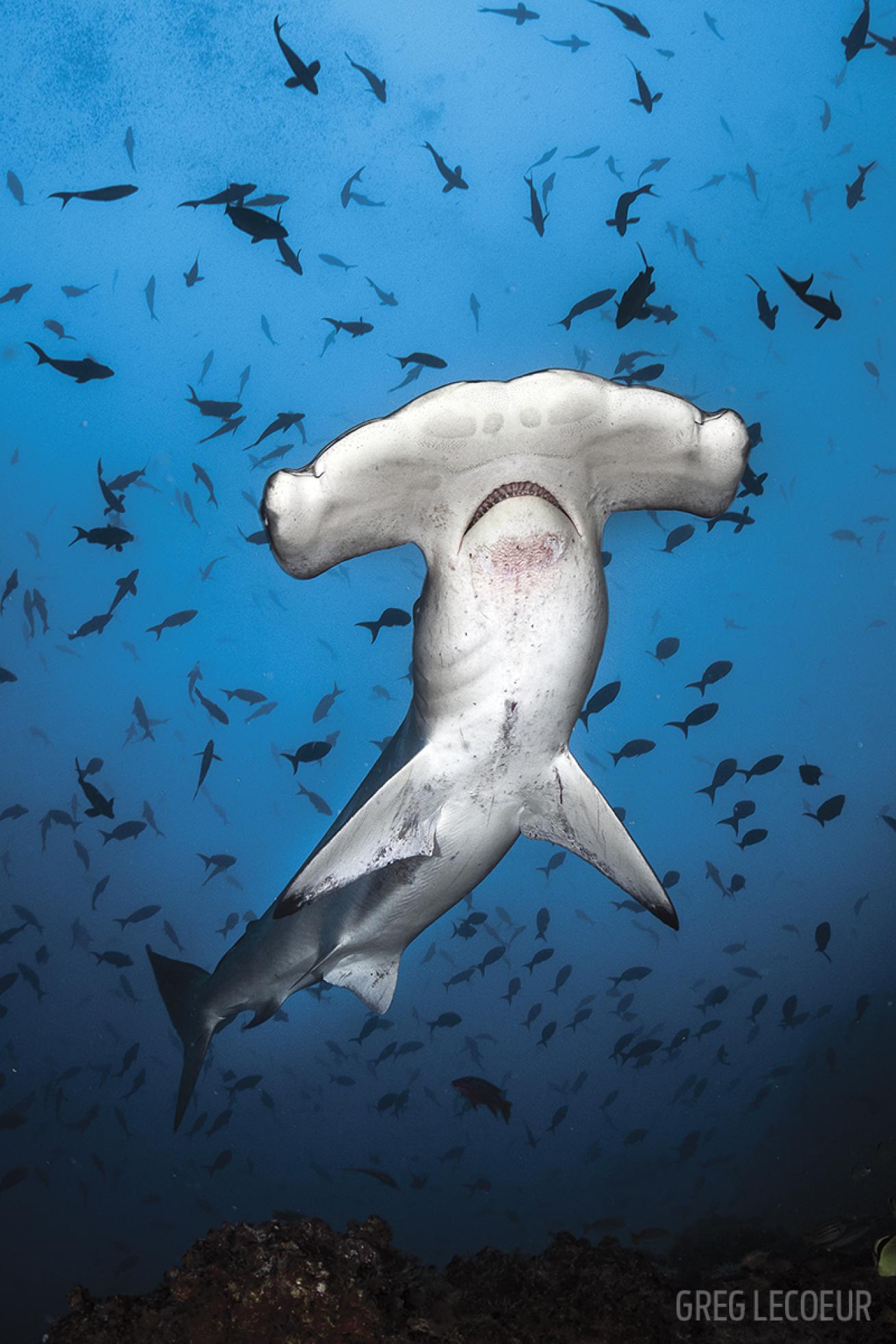
Greg LecoeurA scalloped hammerhead shark off Cocos Island.
“To be designated a UNESCO World Heritage site, you must be significantly different from any other world heritage site,” explains Georgienne Bradley, the founder of Sea Save Foundation, who helped win Cocos Island National Park a spot on the list in 1997. “Cocos has so much in common underwater with the Galapagos that the first two proposals were turned down,” she says, so the petition she contributed to shined a spotlight on Cocos’ endemic topside species and tropical rainforest. And while “going topside” won the case, according to Bradley, underwater is where divers lose their minds in this archipelago located some 340 miles off Costa Rica’s Pacific coast. Remembering one of the best dives of her life, Bradley says, “Sharks were hitting us left and right. Jacks and chubs had created this orb down below, and there were silkies and Galapagos sharks. Dolphins kept circling the perimeter. There were sailfish too, and birds were diving.” A feast for every sense and from every angle, in other words. Sign us up.
Okeanos Aggressor 1 and Okeanos Aggressor II
7) RAPA NUI NATIONAL PARK
Chile
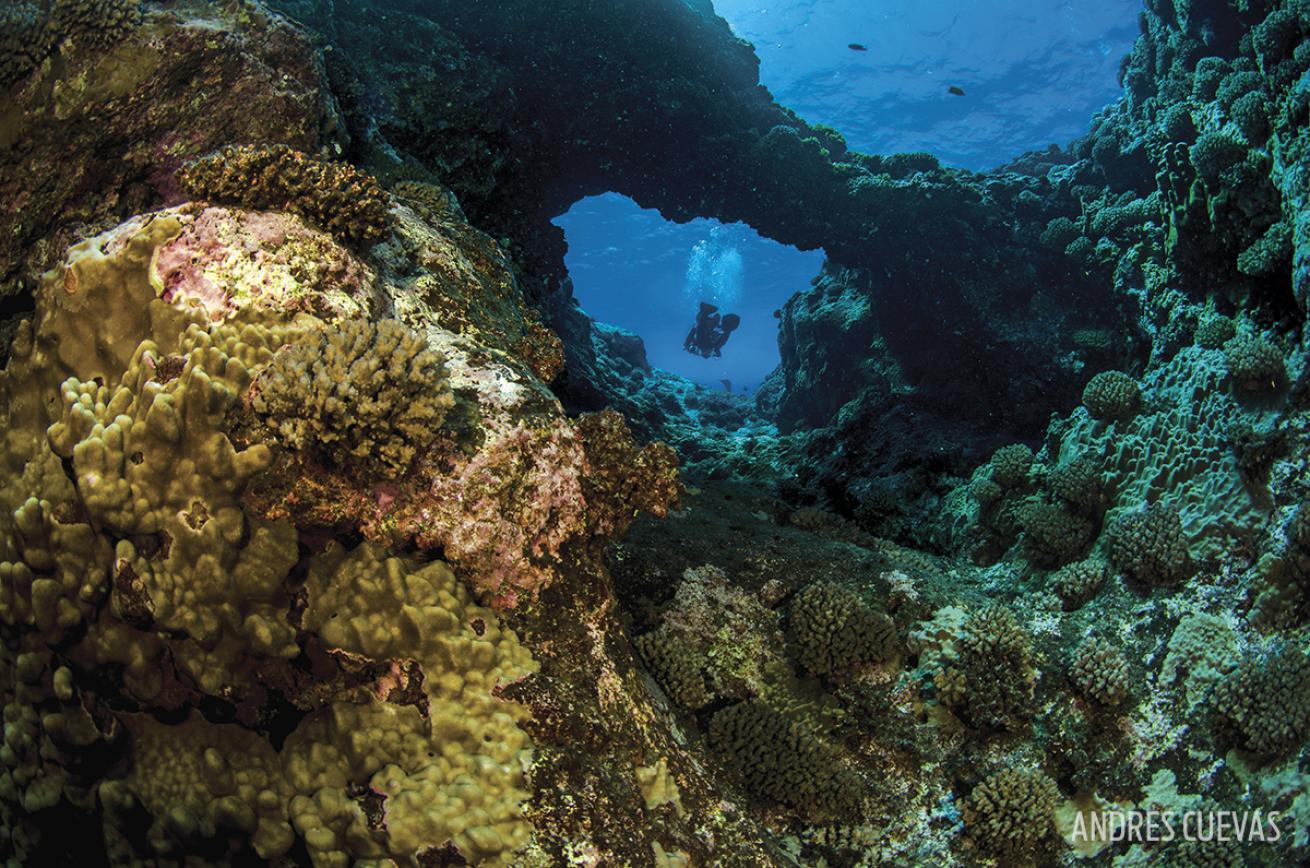
Andres CuevasThe arch at the Cathedral dive site on Rapa Nui.
A plunge underwater at Rapa Nui — aka Easter Island, of the famed Moai monolith statues — won’t likely bring the most prolific fish life you’ve ever seen. But for some of the most crystalline ocean waters in the world and dramatic seascapes that include walls, caves and caverns, it can’t be beat. Visibility often extends over 190 feet at Rapa Nui (just try to imagine that!) thanks to a lack of outside contamination and plankton. And in Hanga Roa Bay, you can often fin alongside sea turtles and admire interesting stands of lobe coral. “Diving near the motus (rock islands) with the sunlight piercing the breaking waves is spectacular,” recalls Swedish PADI instructor Peder Nielsen. “And the light is also what struck me most about topside in Rapa Nui. Walking around the countless moais just before sunset, the statues were bathed in the softest possible light. It was mystical.”
8) GALAPAGOS ISLANDS
Ecuador
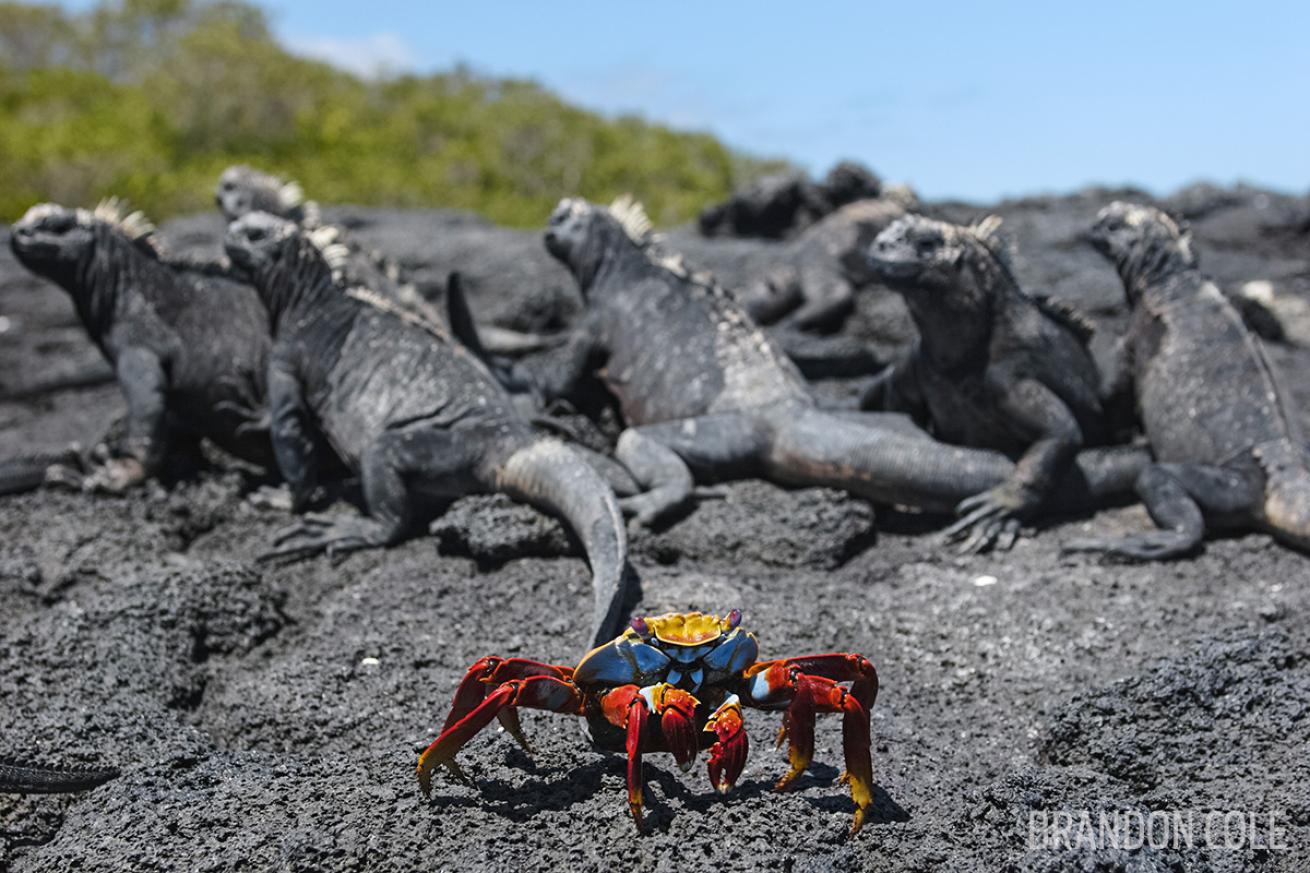
Brandon ColeA Sally Lightfoot crab parades in front of marine iguanas in the Galapagos.
“Schooling hammerheads, walls of rays, and giant schools of fish that make day turn into night when you are surrounded by them” are just a sampling of what awaits when you dive in the Galapagos, says Renske Lauterbach of Worldwide Dive & Sail, an adventure outfitter that runs liveaboard trips in the region. And while the protected area includes all 19 of the archipelago’s islands, it’s Darwin’s Arch and Wolf Island in the remote northwest part of Galapagos that appeal most to divers, with huge schools of fish and common sightings of Galapagos sharks, silky sharks and schooling hammerheads. “There’s a chance to see almost everything on a diver’s bucket list on one dive,” says Lauterbach, rattling off mola mola, whale sharks, mantas and sea lions among the highlights. Add to that the topside wonders that include not only tortoises but also marine iguanas, lizards and the famed finches, and it’s easy to see why Galapagos is one of the most treasured ecosystems and marine systems in the world.
9) TUBBATAHA REEFS NATURAL PARK
Philippines
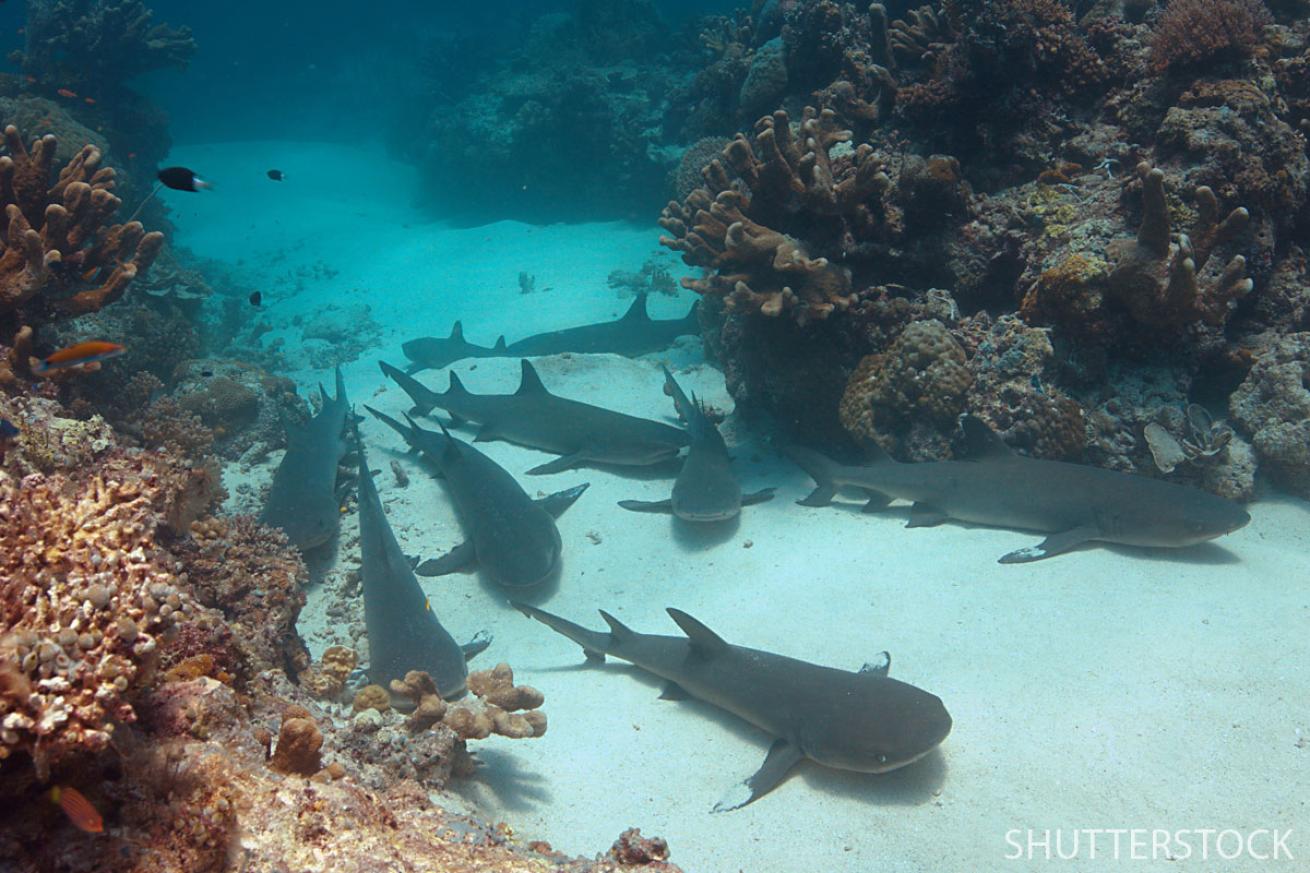
ShutterstockTubbataha Reefs National Park.
Located in the middle of the Sulu Sea between the Visayan Islands and the island of Palawan, the reefs of Tubbataha can be dived only by liveaboard thanks to their remote setting. Declared a UNESCO site in 1993, the park is comprised of a north and south atoll as well as the emergent coral cay of Jessie Beazley Reef. In total, the area covers nearly 400 square miles known for attracting such big boys as dolphins, tiger sharks, whales, turtles and napoleon wrasse. Astoundingly, nearly 90 percent of all corals in the Philippines can be found on the reefs here. And the area is also home to the largest density of whitetip reef sharks in the world. “It’s a truly rich and wild marine environment that promises mantas, several varieties of sharks, wrecks, schooling fish and even rare seabirds,” says underwater photographer Mike Bartick.
10) JEJU VOLCANIC ISLAND AND LAVA TUBES
Republic of Korea
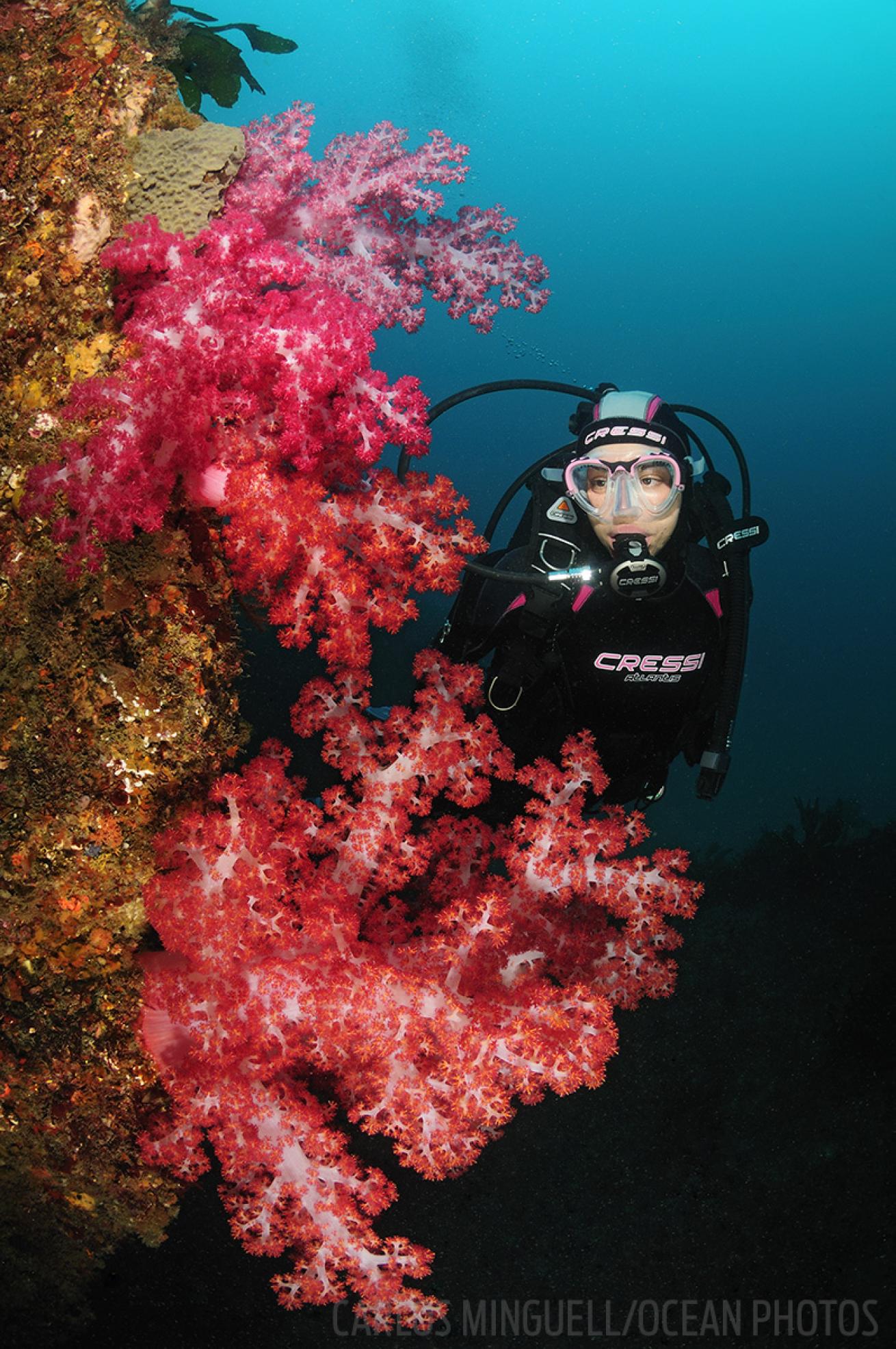
Carlos Minguell/Ocean PhotosJeju Island waters host Dendronephthya soft corals.
A relatively recent addition to UNESCO’s World Heritage Sites (2007), this Korean island is revered for having one of the world’s finest examples of cave lava tube systems, as well as other unique volcanic features. Far off the radar of mainstream international divers, the waters around Jeju are known for Korea’s best diving. One visiting underwater photographer likened the underwater views to a mix of Norway and the Red Sea, thanks to the unusual convergence of sights that include kelp and black rocks, as well as soft corals and tropical fish. Scorpionfish, lionfish, octopuses, angelfish, jacks and grouper are all commonly spotted on dives, and the mix of white sandy bottoms, plunging walls, volcanic rock and walls of soft coral keep the topography fascinating. Divers who love the little things relish Jeju’s abundance of colorful nudibranchs, often seen carpeting entire walls.
11) FERNANDO DE NORONHA
Brazil
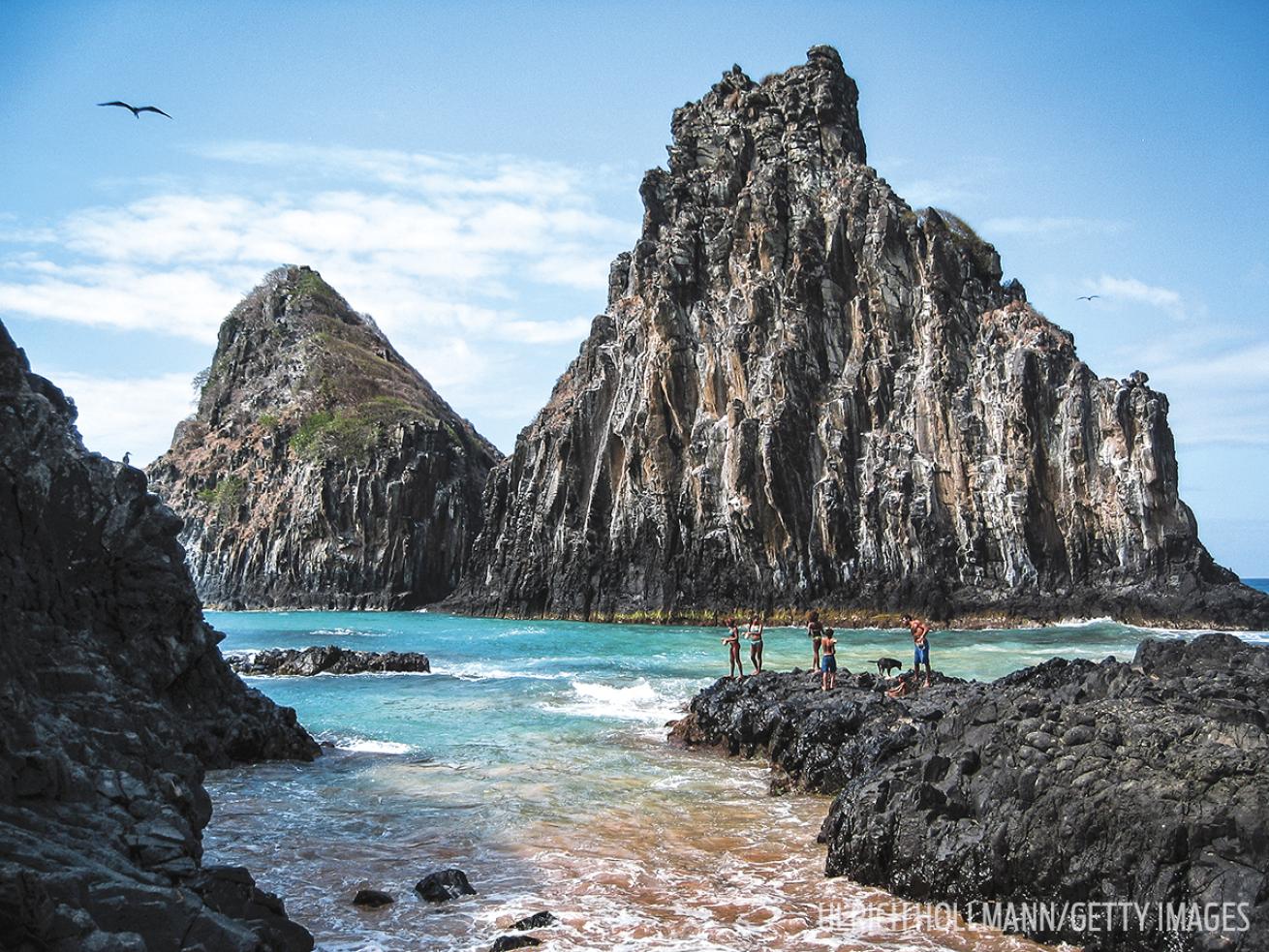
Ulrich Hollmann/Getty ImagesThe rugged peaks of Fernando de Noronha.
At the heart of the Brazilian Atlantic Islands, accorded UNESCO World Heritage status in 2001, Fernando de Noronha Marine National Park offers some of the most surprising diving in the Americas. Your eyes will widen at otherworldly volcanic peaks (the islands are a submerged mountain chain). Underwater, the clear views bring Brazil’s best visibility, which can reach more than 130 feet. Some 200 species of fish live here, and sightings of lobsters, octopuses, rays and sharks are common. Humpback whales are also seen. “And as a dolphin sanctuary, Fernando de Noronha can surprise you with groups of curious dolphins swimming by,” says Rio de Janeiro-based photographer Andre Maceira. The untouched feel and pristine marine life has to do with the remote location of the 21 islands, as well as the fact that the government controls the number of visitors to Brazil’s most treasured marine environment.
12) CABO PULMO NATIONAL MARINE PARK
Mexico
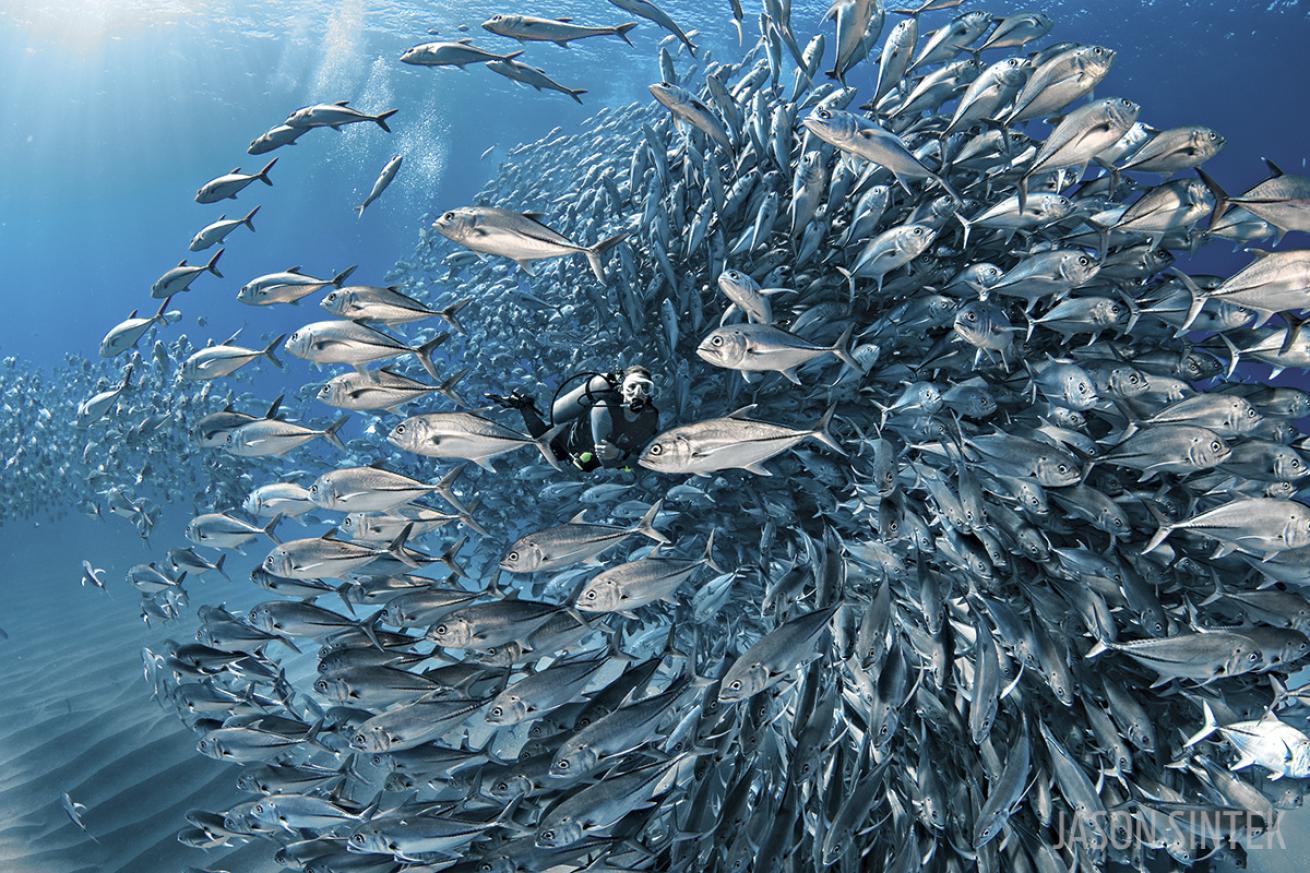
Jason SintekBigeye trevally in the Sea of Cortez, which Cousteau dubbed “The Aquarium of the World.”
Within the UNESCO- listed Island and Protected Areas of the Gulf of California World Heritage Site (which is actually in Mexico), Cabo Pulmo National Marine Park offers aquariumlike diving conditions. It’s known as the best place to dive in Baja Sur thanks to the living coral reefs and abundant sea life. The park is just 3 miles from east to west and 9 miles from north to south, but don’t let its diminutive size fool you. Over 300 fish species live here, and the park is known for its abundant mobula rays – a species that migrates in groups of up to 250,000 animals and is known for its aerial acrobatics (the rays can leap more than 10 feet into the air above the water’s surface). Most of the diving here takes place close to shore in Cabo Pulmo Bay, where you’ll see beautiful hard and soft corals and, depending on the time of year, schooling cownose rays and mobulas, hawksbill turtles, whale sharks, and perhaps even a passing humpback whale or two.
Rocio Del Mar | Cabo Pulmo Beach Resort
13) ROCK ISLANDS SOUTHERN LAGOON
Palau
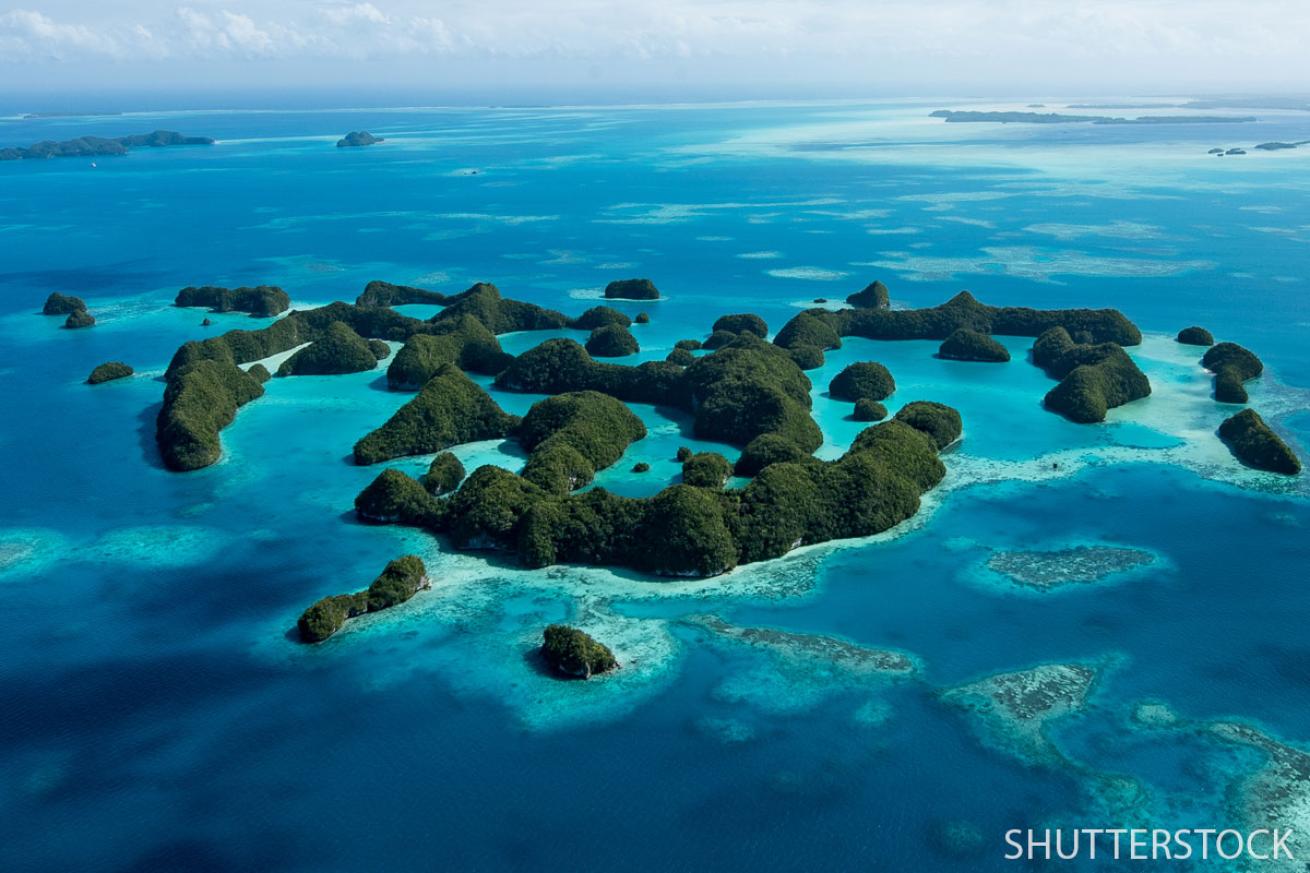
ShutterstockRock Islands southern lagoon.
Rising like so many emerald toadstools from a turquoise sea, the unmistakable limestone islands of Palau have been the poster child of countless conservation messages and websites. And while the topside beauty of the volcanic islands is spectacular, it’s what’s underwater here that truly wows. The 445 uninhabited islands in the Rock Islands Southern Lagoon are home to the most marine lakes on the planet (the 52 lakes here include the famous Jellyfish Lake). And new endemic species are constantly being discovered within the lakes, as well as out on the barrier reef fringing the lagoon. Channels, tunnels, caves, walls and arches underwater lay the groundwork for some of the very best diving in the planet at legendary sites like Ulong Channel, Peleliu Wall and Blue Corner. And cleaning stations bring in mantas by the dozens at German Channel. If you can dream it, chances are you can dive it in this epicenter of exceptionally high biological and marine habitat biodiversity.

